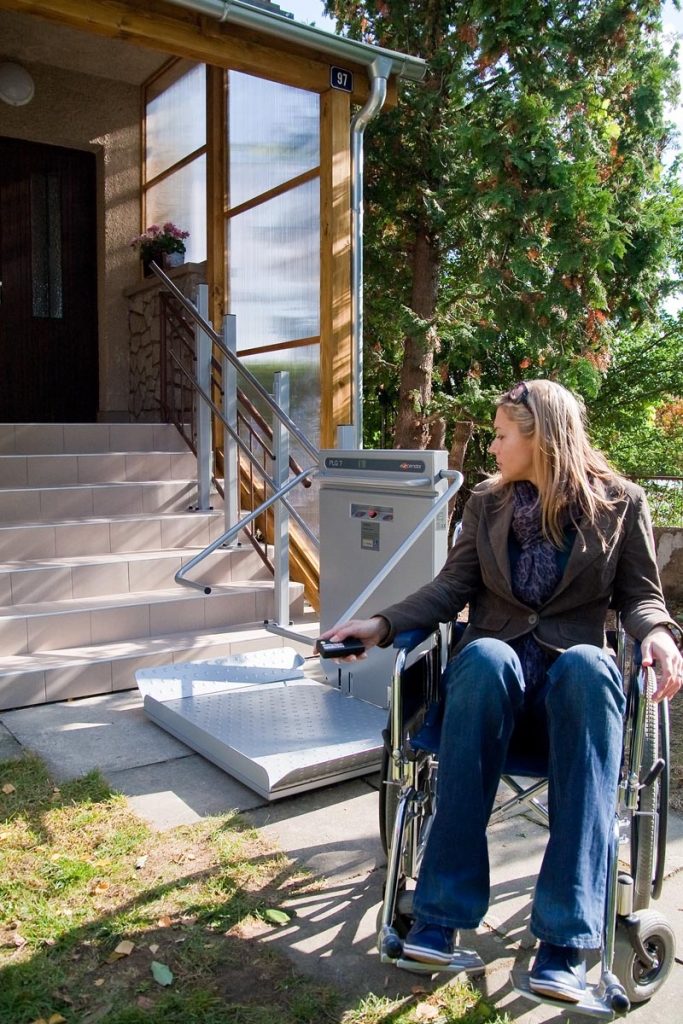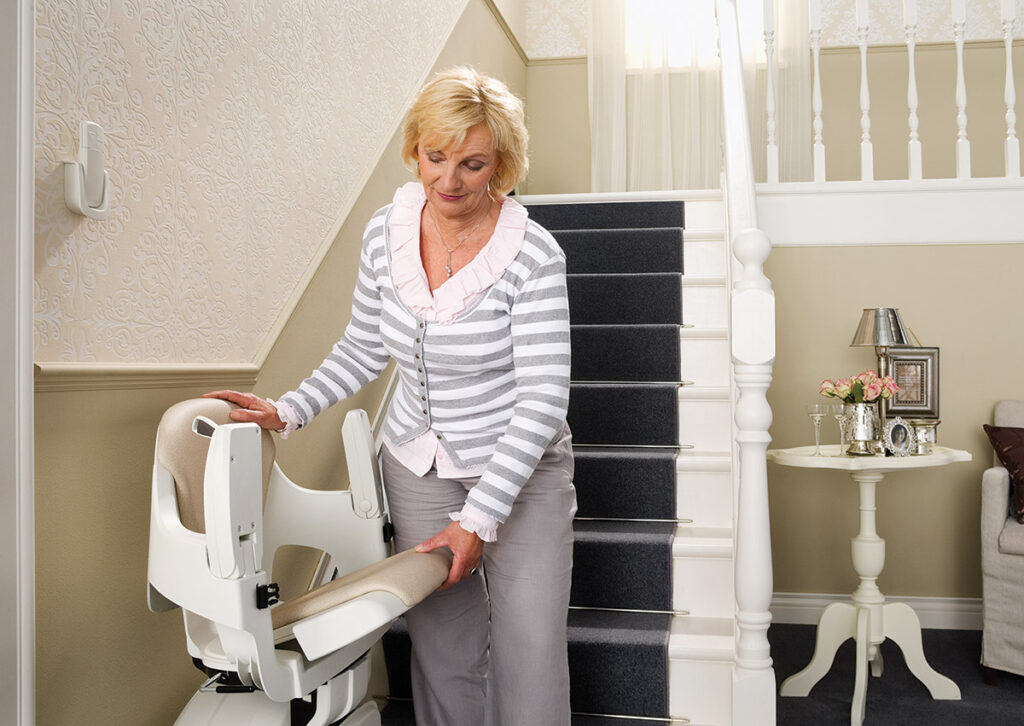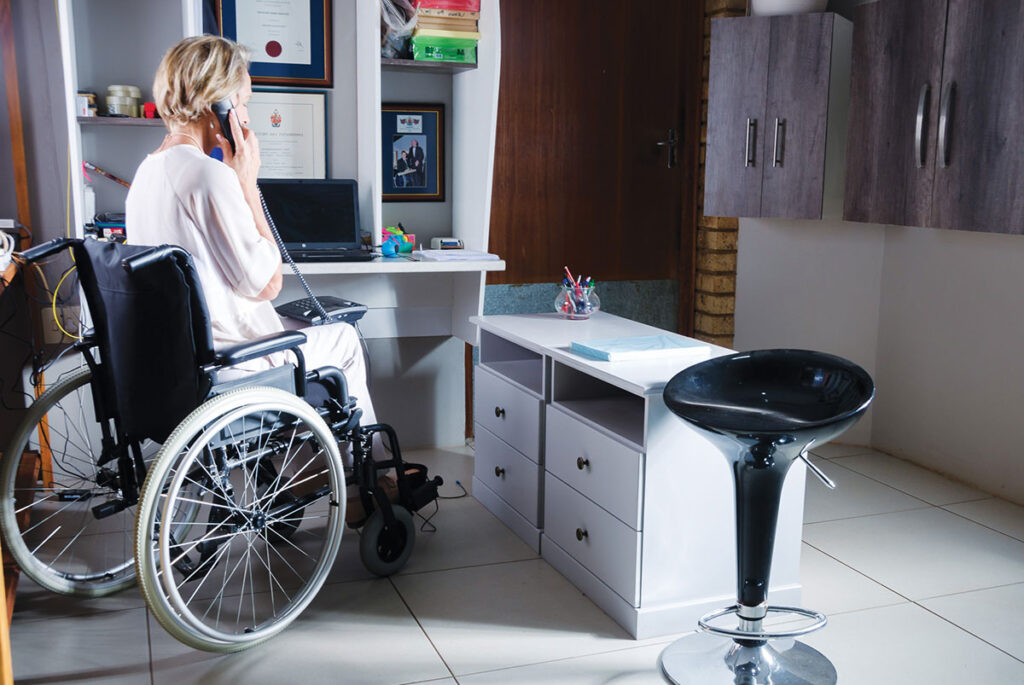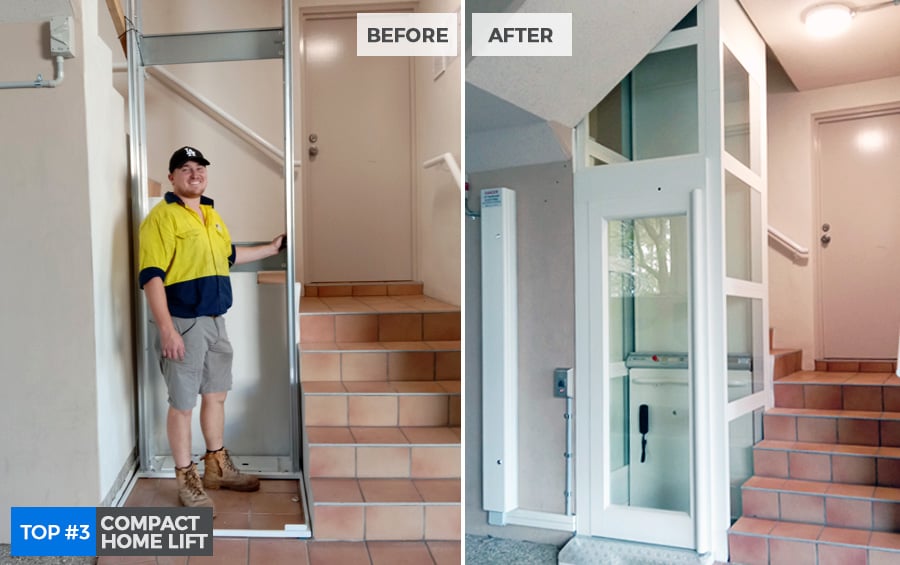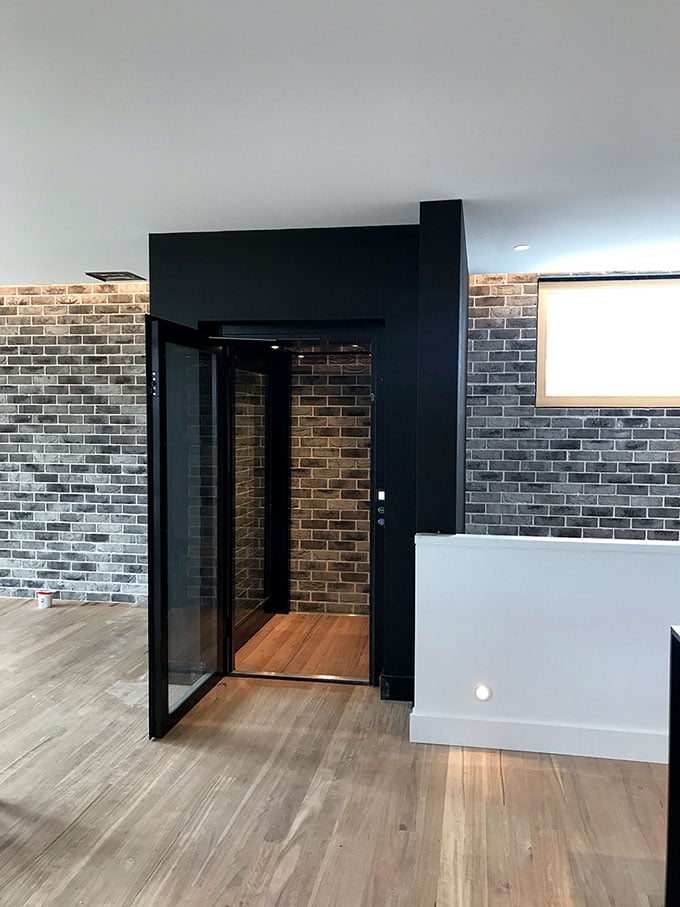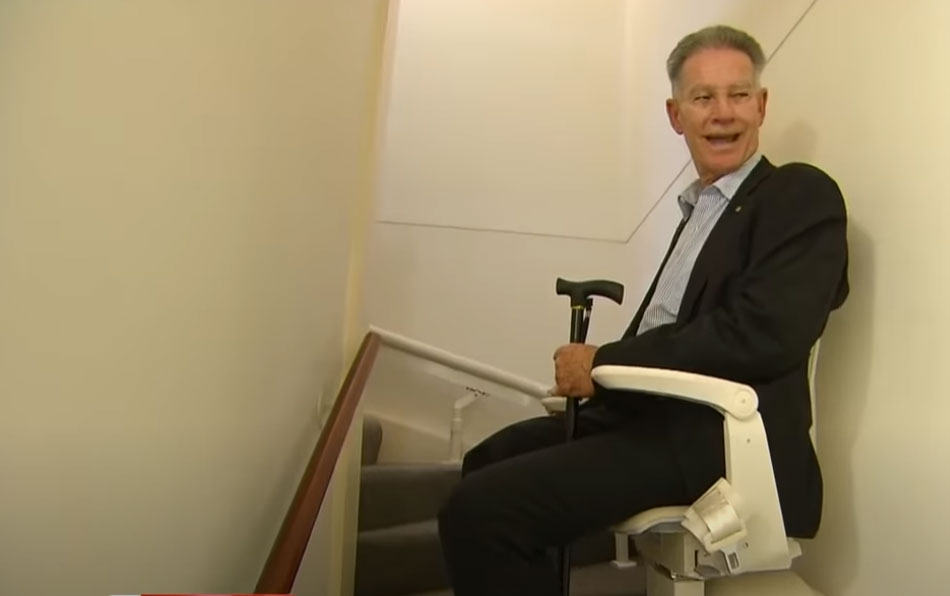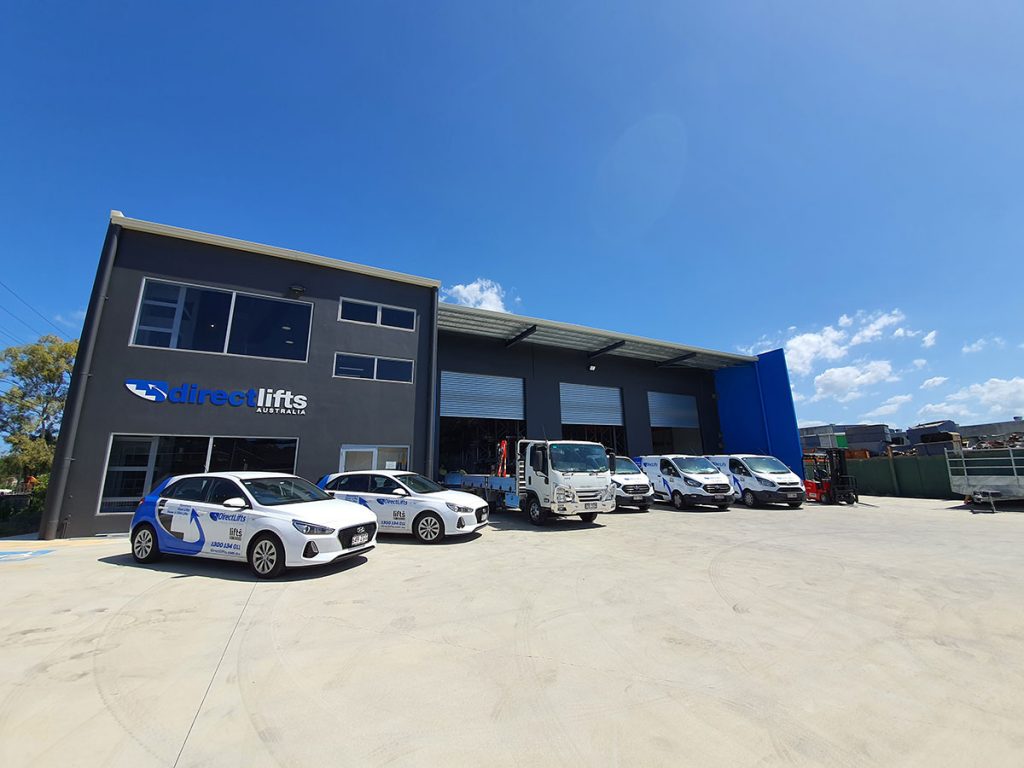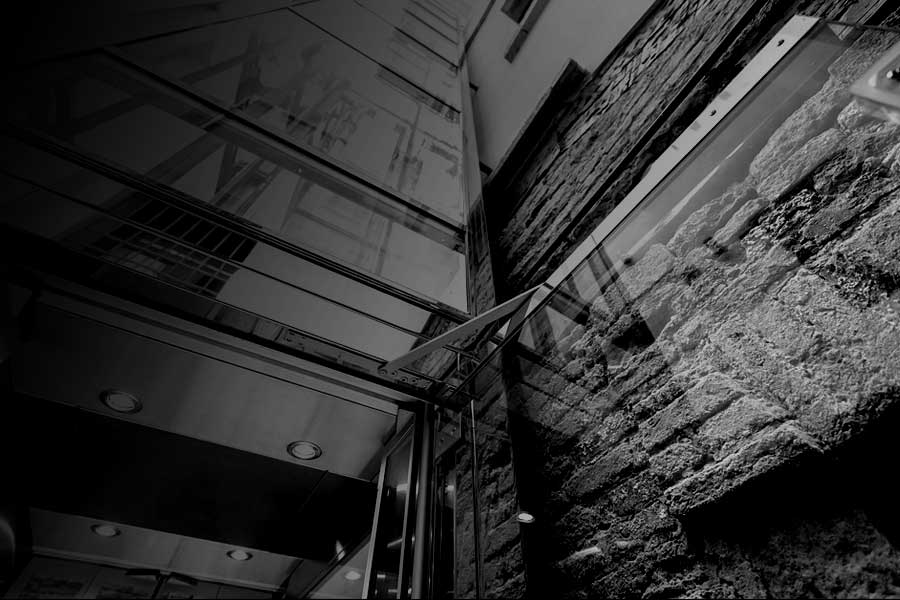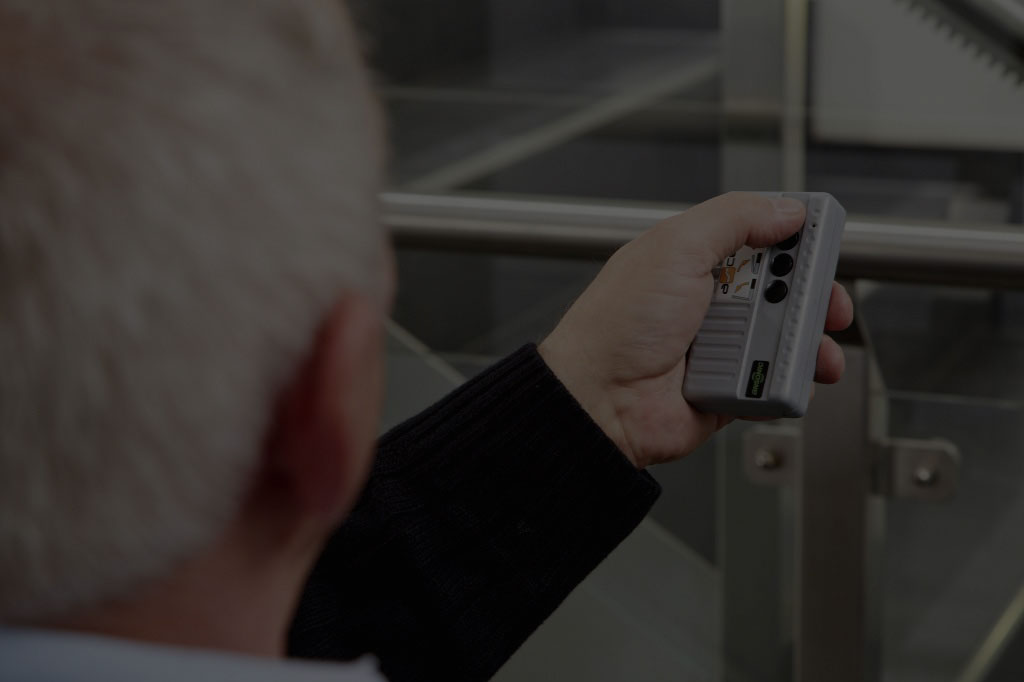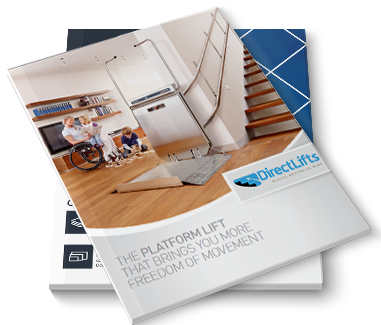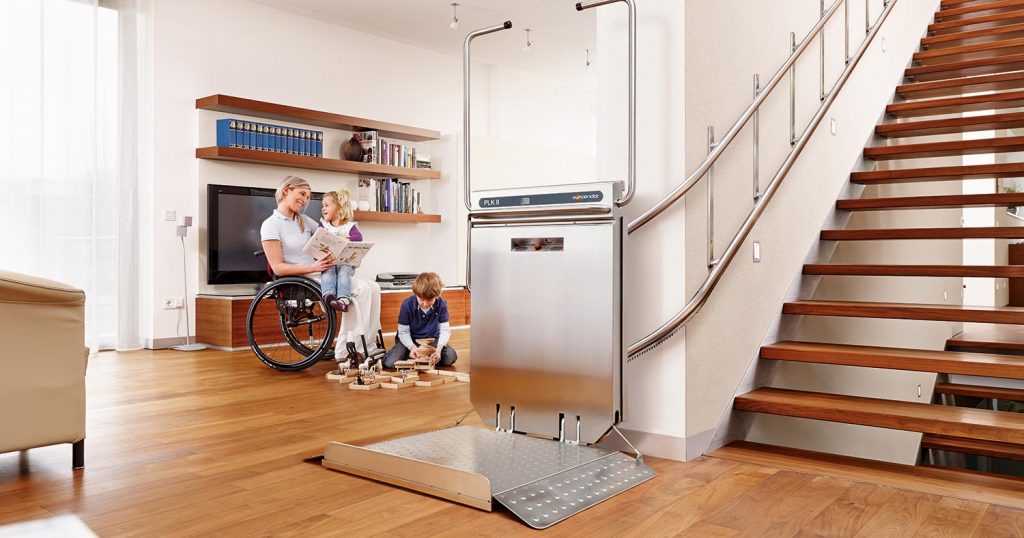
‘Wheelchair lift‘, ‘open platform lift’ or ‘low rise platform lift’ are all terms that describe the same basic product and its function: they all allow a wheelchair to be rolled onto a platform and carry the wheelchair and its passenger from one level to another.
Whether you require a wheelchair lift to help you move in and out of your home or about the home itself, seeking a lift to meet access compliance regulations, or seeking improved access to your business or organisation, there are now a great range of options available. People in wheelchairs can move in and out of buildings as well as accessing different levels once inside a building. Both residential (in home use) and commercial applications are available.
A wheelchair lift or platform lift is broadly defined as a standalone unit that provides access to a location where the installation of an elevator is either impossible or impractical. The platform lift helps overcome height barriers such as stairs, verandas and stages. Wheelchair lifts are available as a permanent installation or as a portable option, whereas a platform option is always a permanent installation.
There are two types of platform lift: Vertical Platform Lift (VPL) and Inclined Platform Lift (IPL). The VPL travels up and down, while the IPL travels diagonally moving across a barrier such as stairs.
The IPL travels along a rail generally installed on a staircase or an adjacent wall. The IPL also has the benefit of being able to be folded up when not in use, saving space and allowing others to use the stairway.
Both types of platform lift allow the travel of a person in a wheelchair or other mobility aid such as a scooter or walker. The VPL is more commonly installed and simple moves up and down from a fixed position.
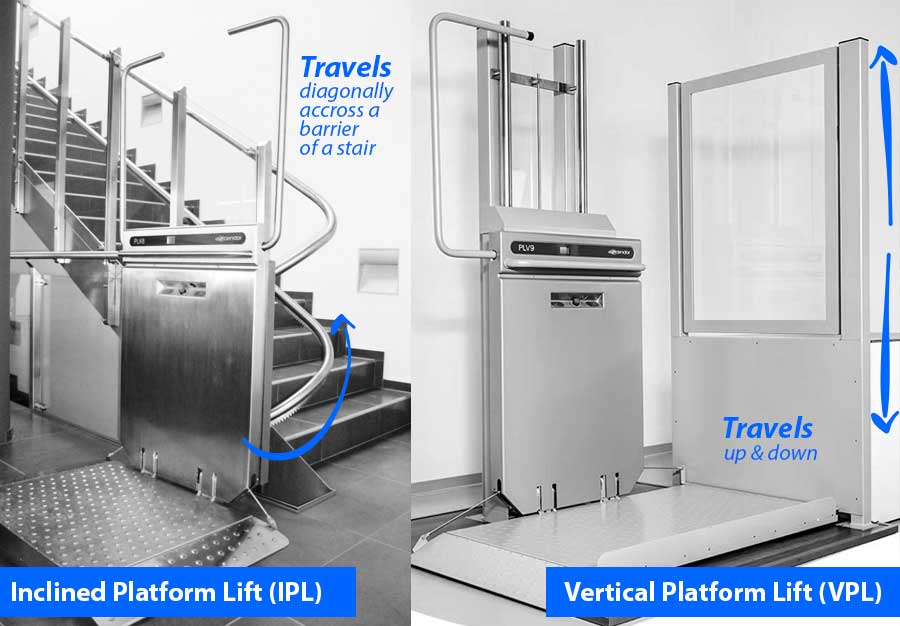
Inclined Platform Lift (IPL)
Vertical Platform Lift (VPL)
All wheelchair lifts have either an ‘under platform safety pan’ or obstruction sensors mounted on all sides. The purpose of the pan and the safety sensors is to operate as an emergency stop if there is an object underneath the lift.
Lifts should be easy to use and the controls able to be managed by the occupant. Some platform models have easy to use buttons with a separate emergency button. Other models feature ‘constant pressure operating switches’ where the passenger can operate the lift easily by holding down the switch or button. Removing the pressure will automatically stop the lift eliminating the need to look for and press a separate emergency button. Most platform lifts will have battery back up power in case of a power cut as well as a means of lowering the lift.
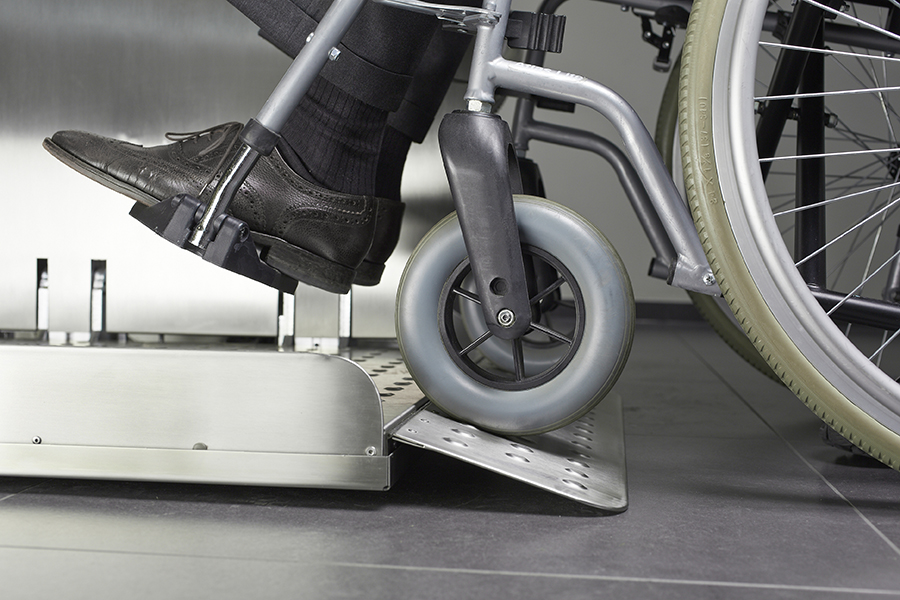
Vertical platform lifts can be installed with or without a pit. The pit allows room for the ‘under platform safety pan’. Alternatively a small ramp can be installed to allow the wheelchair to travel from the existing floor level onto the platform. There is usually a metal plate installed at the top of the lift for easy access into and out of the lift.
Some models or installations owing to compliance requirements may need to be enclosed or in a shaftway. The enclosure is commonly made of steel or aluminium with Plexiglas or laminated panels and has doors at the bottom and top of the lift. Shaftways are more commonly used with indoor installations such as the Flex-e. This style of lift has low space requirements and provides a high level of security as well as a contemporary, clear easy to use control panel and a soft start/stop.
Wheelchair lifts or platform lifts can also be installed outdoors where weather proofing of electrical components as well as the drive system and platform protect the unit from the elements. The Ascendor by Lifttechnik is a straight or curved inclined platform lift that will travel both internal and external staircases.
Some things to think about when deciding on the best fit for your requirements.
- Firstly will the wheelchair lift be internal or external? If external is there the option to install it inside a garage or a sheltered area? Remember that you need to be able to allow room for the lift as well as access on and off the lift.
- Also, where will the lift be placed? If it is a vertical platform lift it is easier to secure the tower (the structure which the platform moves up and down) against a wall or floor joist.
- If an inclined platform lift is installed does anyone else need to access the stairs?
- Do you need a sidewalk access to the lift?
- What lift capacity is required to meet possible user demand eg private home/limited user or a public facility. With a wide variety of users it is recommended that you choose the maximum capacity.
Key things to remember about a wheelchair lift is that they are generally designed:
- To only carry one person at a time (always take note of the weight rating)
- For limited use for example 5 to 15 times per day
- With limited load weight and height rise
There are other lifts that can carry more than one person and greater weights. Contact Direct Lifts on 1300 034 011 to discuss what other options may suit your specific needs.
Finally, remember it is important to have your lift serviced regularly to ensure its smooth and reliable operation for many years.
Book an appointment @ 1300 134 011

A man who knows his way around the world of mobility. He has been in this industry for decades and has seen it all!
He started his career in Brisbane with mobility scooters, and progressed to stairlifts, and ultimately platform lifts. He gained a newfound interest in elevators while working in the lift industry and took advantage of the opportunity to work in both residential and commercial lifts. He is now the official distributor of Nova Elevators Italy, Cibes, Ascendor, Otolift & ThyssenKrupp products in Australia. Offices and showrooms expanded in Brisbane, Sydney & Coffs Harbour while establishing partnerships in major cities such as Melbourne, Northern Territory.
He is a current member of the Lift Engineer’s Society of Australia (LESA), providing advice regarding lift standards, their implementation, good industry practices and compliance with applicable AS standards, guidelines, and codes

